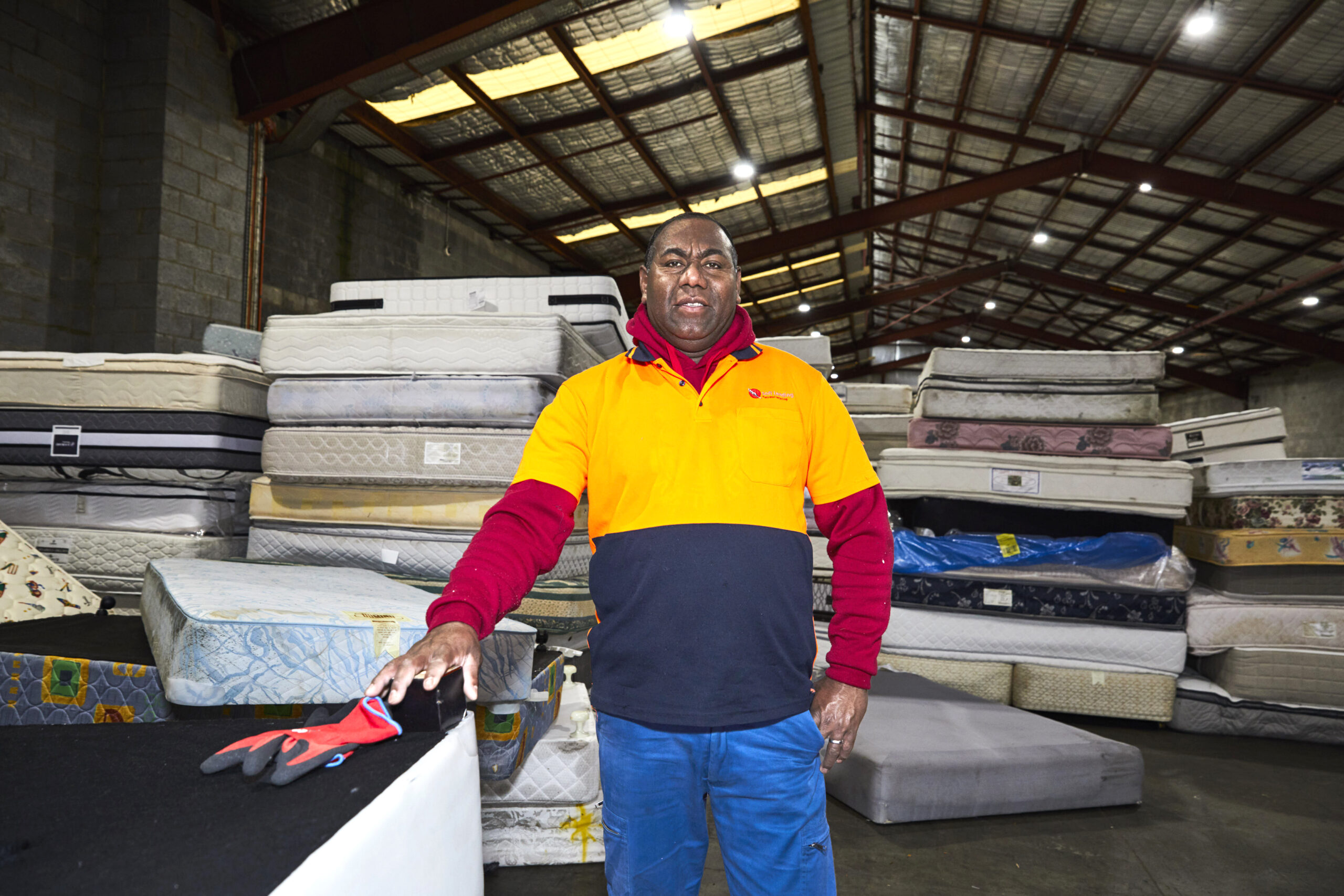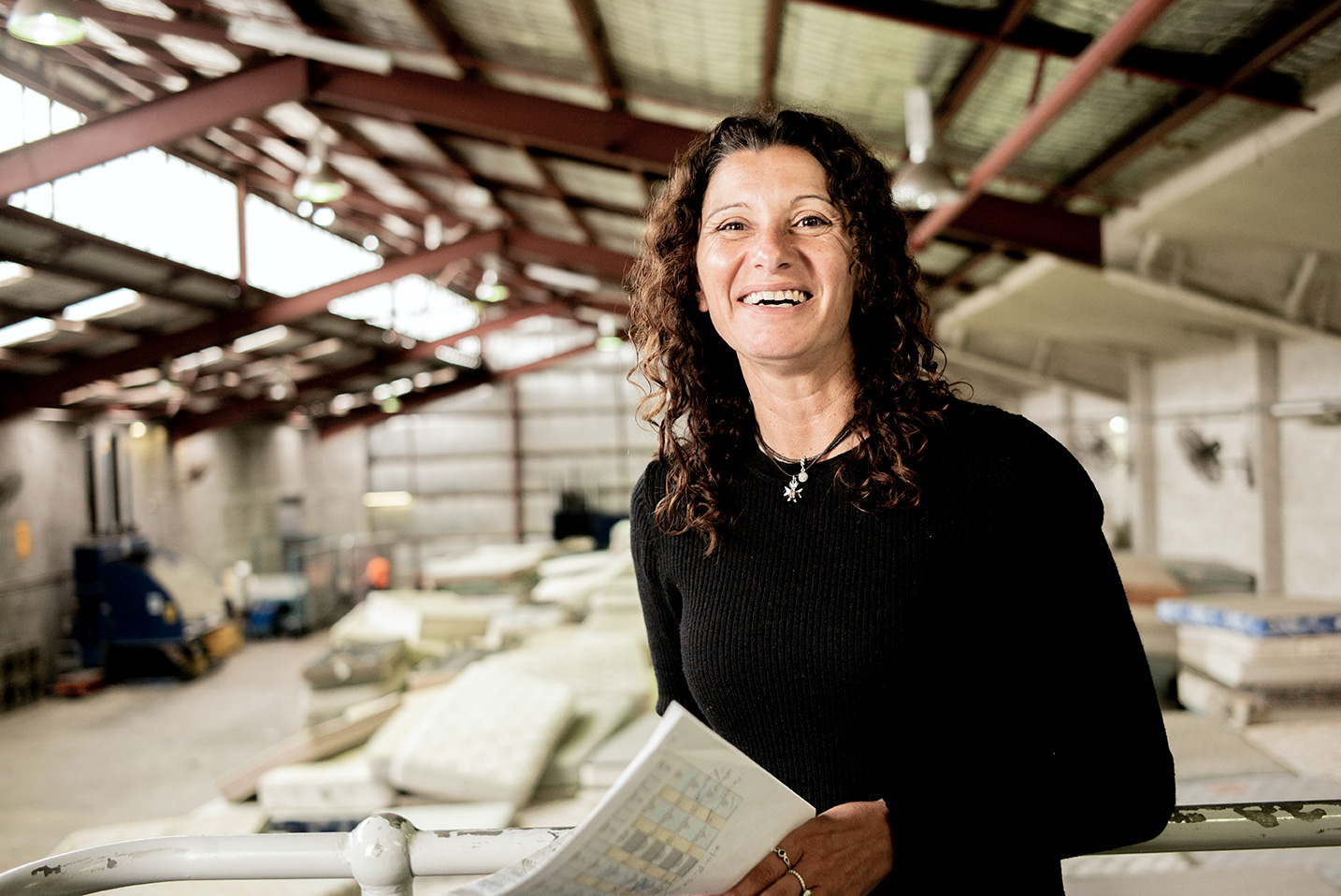What Happens to Your Mattress When it’s Recycled
A guide to the manual mattress recycling process and its environmental and social benefits
If you’re considering recycling your old mattress, you might be curious: What happens to a mattress when it’s recycled?
At Soft Landing, we specialise in manual mattress recycling with a hands-on approach that maximises resource recovery. By choosing to recycle with us, you’re not only helping to keep valuable materials like foam, steel, timber, and textiles out of landfill – you’re also supporting a sustainable mattress disposal process that transforms these materials into new, useful products. This reduces environmental impact, conserves resources, and gives your old mattress a second life.
Here’s a closer look at what goes into a mattress, how we recycle mattresses at Soft Landing, and the journey of mattress foam as it’s carefully recovered and recycled into carpet underlay.
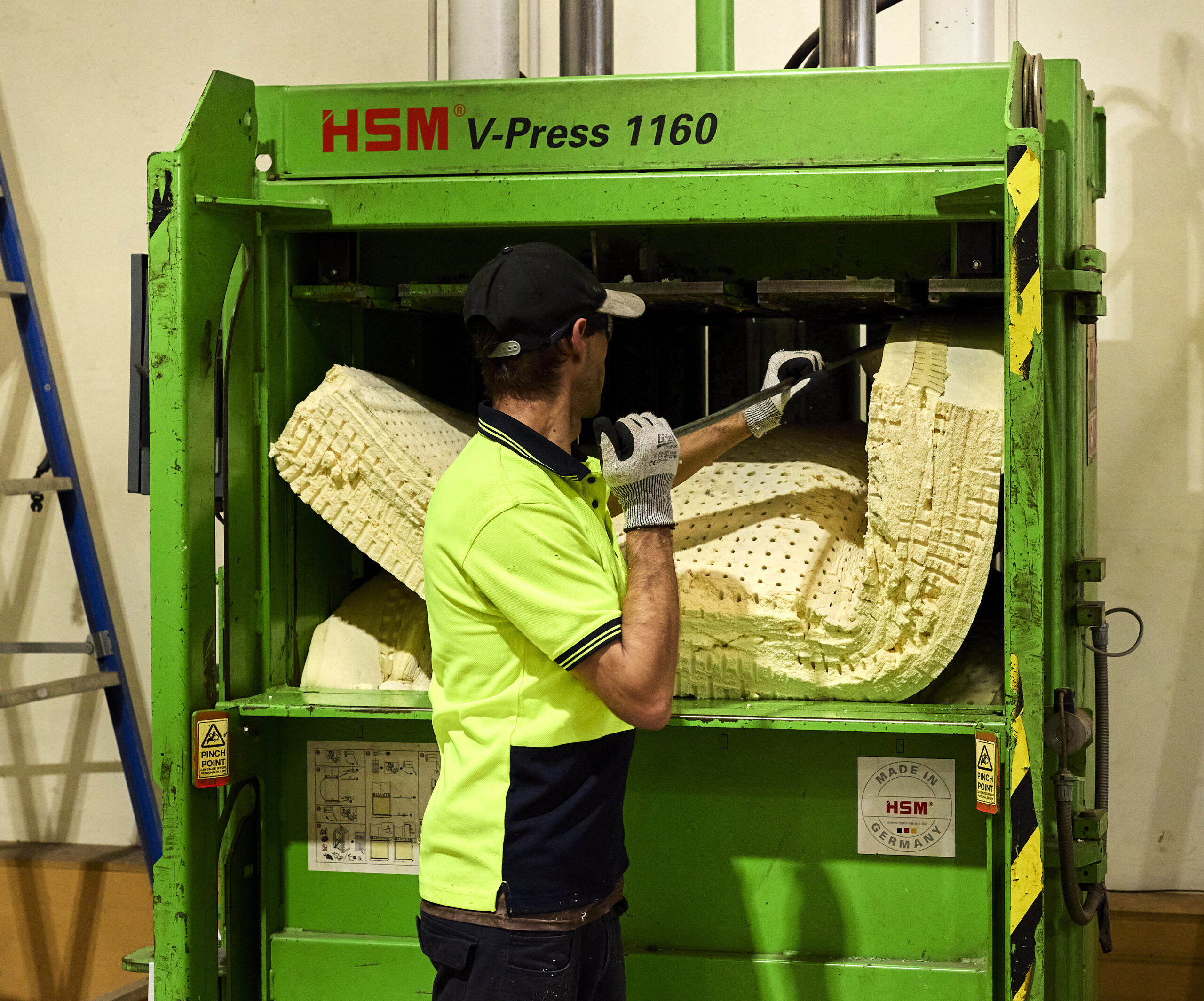
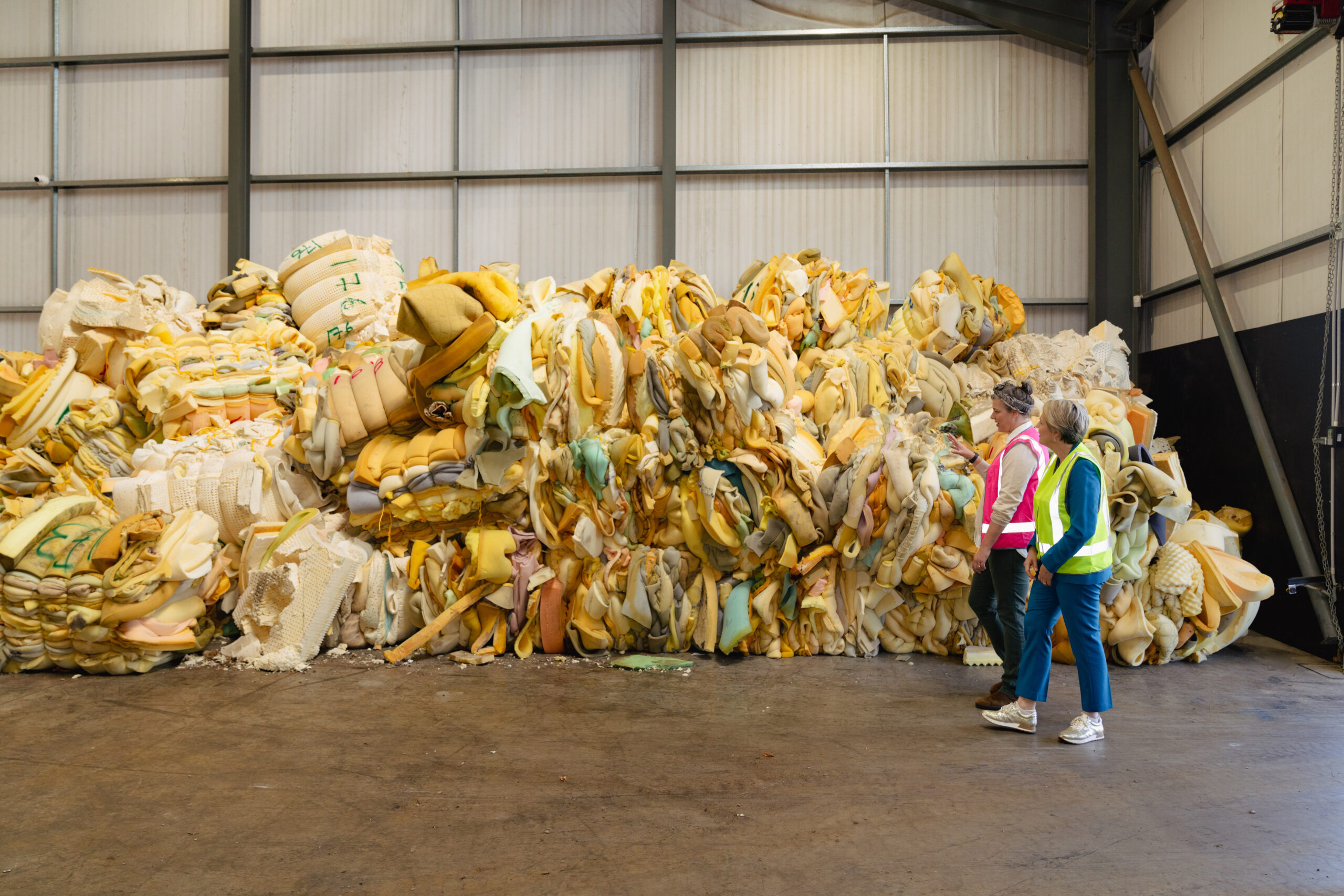
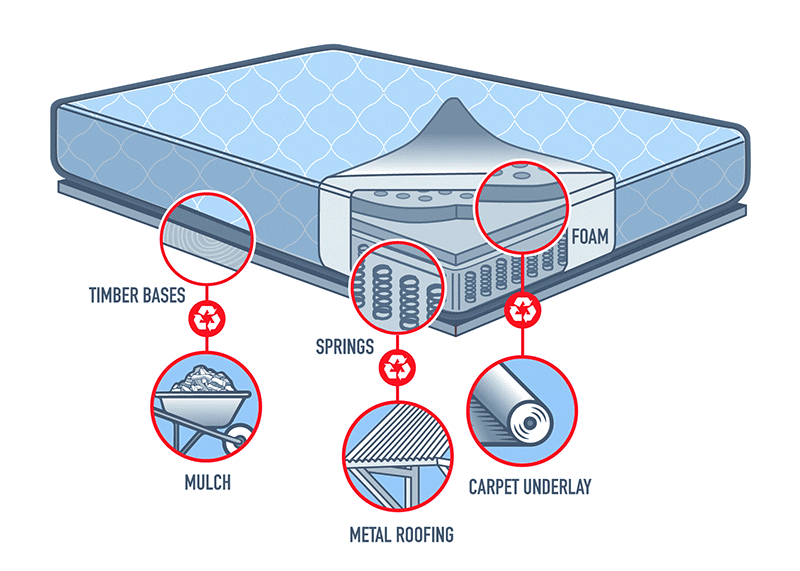
What Materials Are Inside a Mattress?
What Materials Are Inside a Mattress?
How Are Mattresses Recycled?
At Soft Landing, we use a careful, manual recycling process that maximises resource recovery. By dismantling each mattress by hand, we can recover valuable materials like foam, steel, textiles, and timber – keeping them out of landfill and giving them a new purpose.
Here’s a step-by-step look at how we recycle mattresses:
Collection
We collect mattresses from households, councils, retailers, hotels and other businesses and organisations across Australia. Our mattress collection service provides a convenient, responsible disposal option for individuals and organisations.
Manual Deconstruction
Our team carefully dismantles each mattress by hand. This process allows us to separate each material type effectively, which is more challenging through mechanical methods. Our team removes the fabric cover, extracts the steel springs, and separates the foam and timber.
Material Sorting
Once the materials are separated, they are sorted by type (e.g. steel, foam, timber, and textiles). This targeted sorting allows us to maximise the recycling of materials.
Recycling and Reuse
After sorting, the materials are sent to different partners for recycling or reuse. For example, foam may be sent to carpet manufacturers for underlay, while steel springs enter the scrap steel market, keeping these resources in circulation and out of landfill.
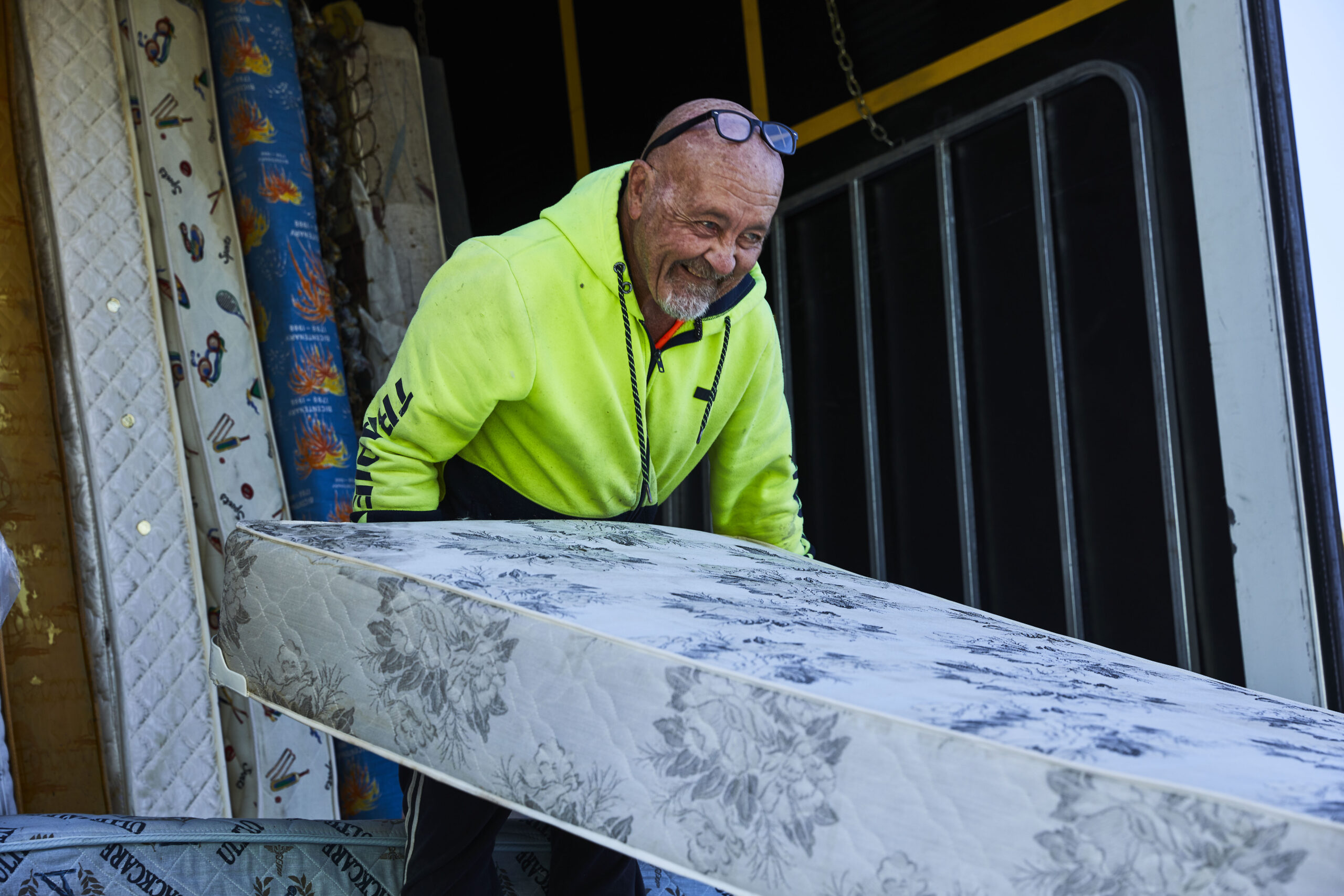
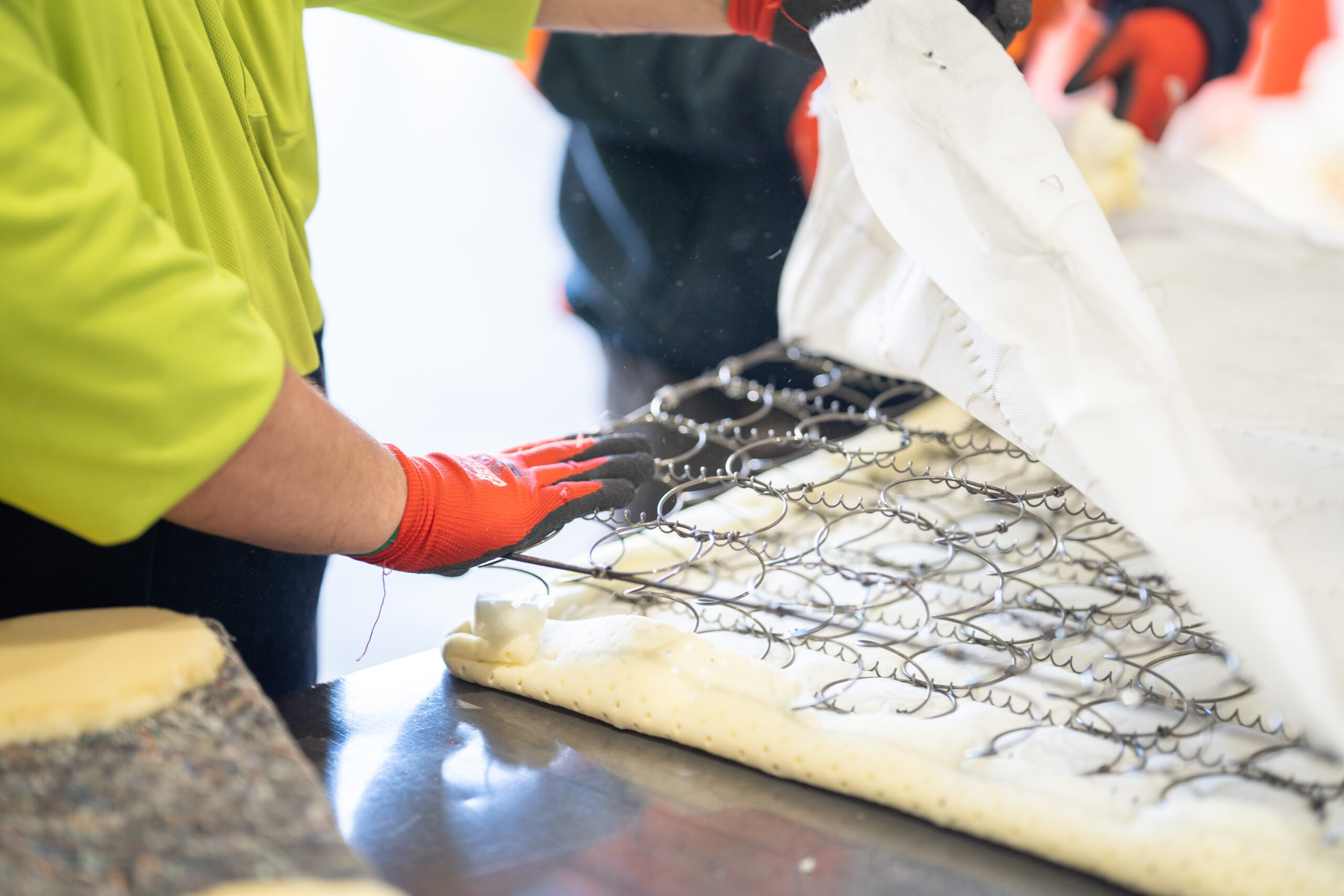
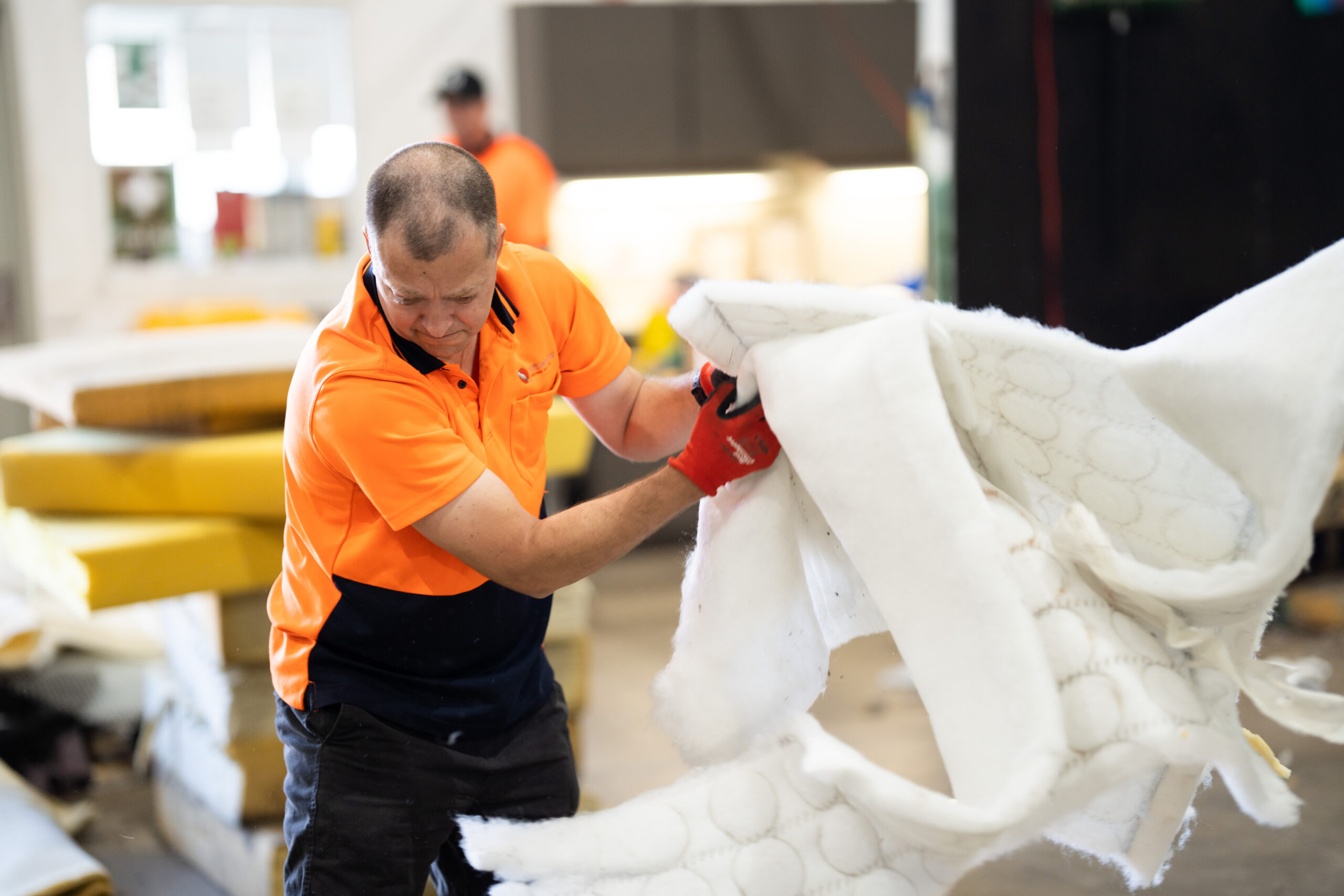
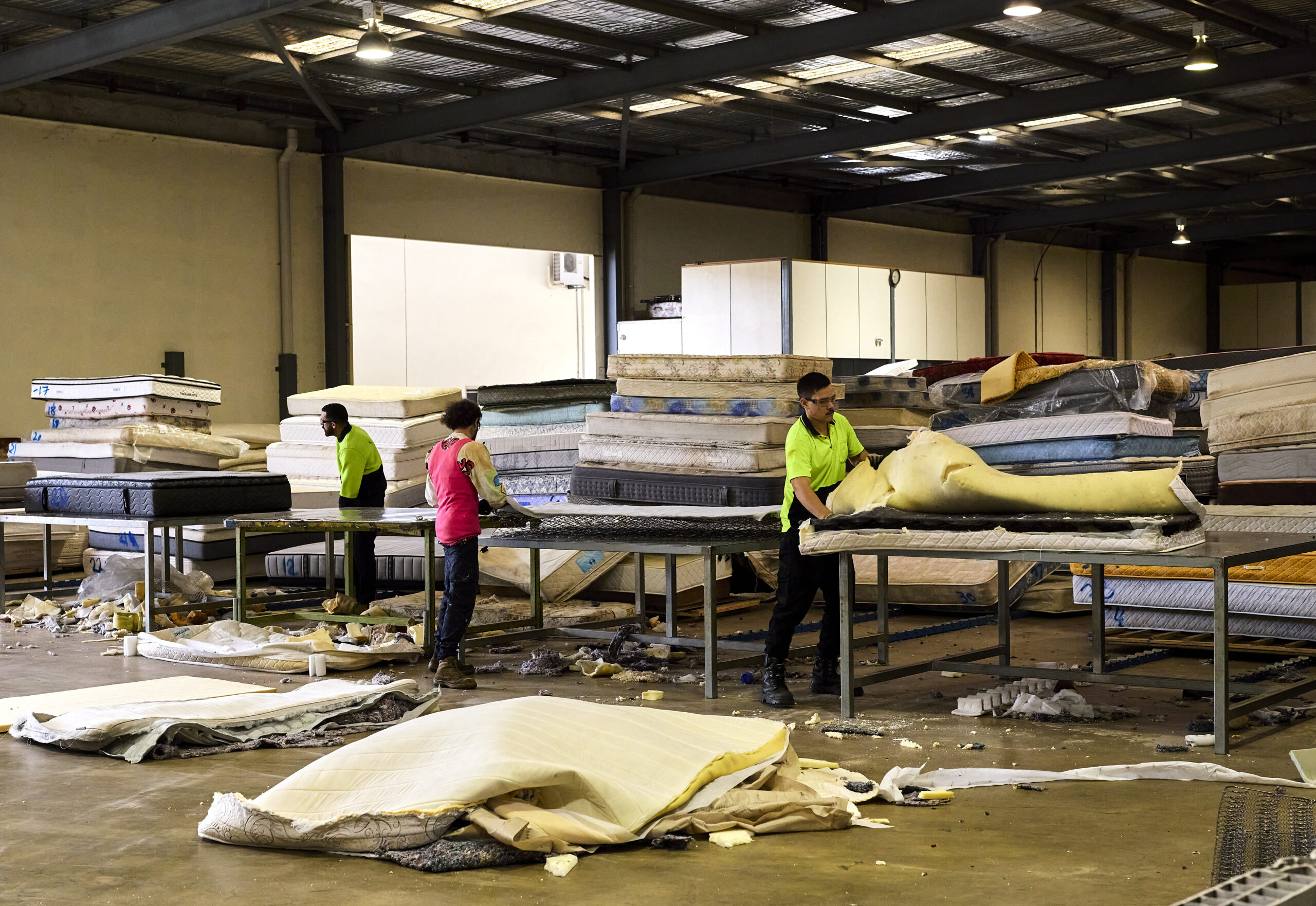
The Benefits of Manual Mattress Recycling
The Benefits of Manual Mattress Recycling
Are Mattress Materials Recyclable?
Yes, many components within a mattress are recyclable and can be reused or repurposed. Here’s a closer look at what can happen to some common mattress materials:
Steel Springs
Steel springs enter the scrap steel market and can be used in the manufacturing of new steel products, saving up to 75% of the energy that would be needed to make steel from virgin materials.
Timber
Timber can be diverted from landfill in several ways, including reuse in new bed bases, recycling into mulch or engineered timber, or conversion to energy in waste-to-energy facilities.
Foam
Foam can be recycled and used in applications such as carpet underlay, giving it a new life in homes and businesses.
Textiles (Fabric & Wool)
Textiles, including fabric and wool, currently have limited recycling markets but may be converted into energy through waste-to-energy processes.
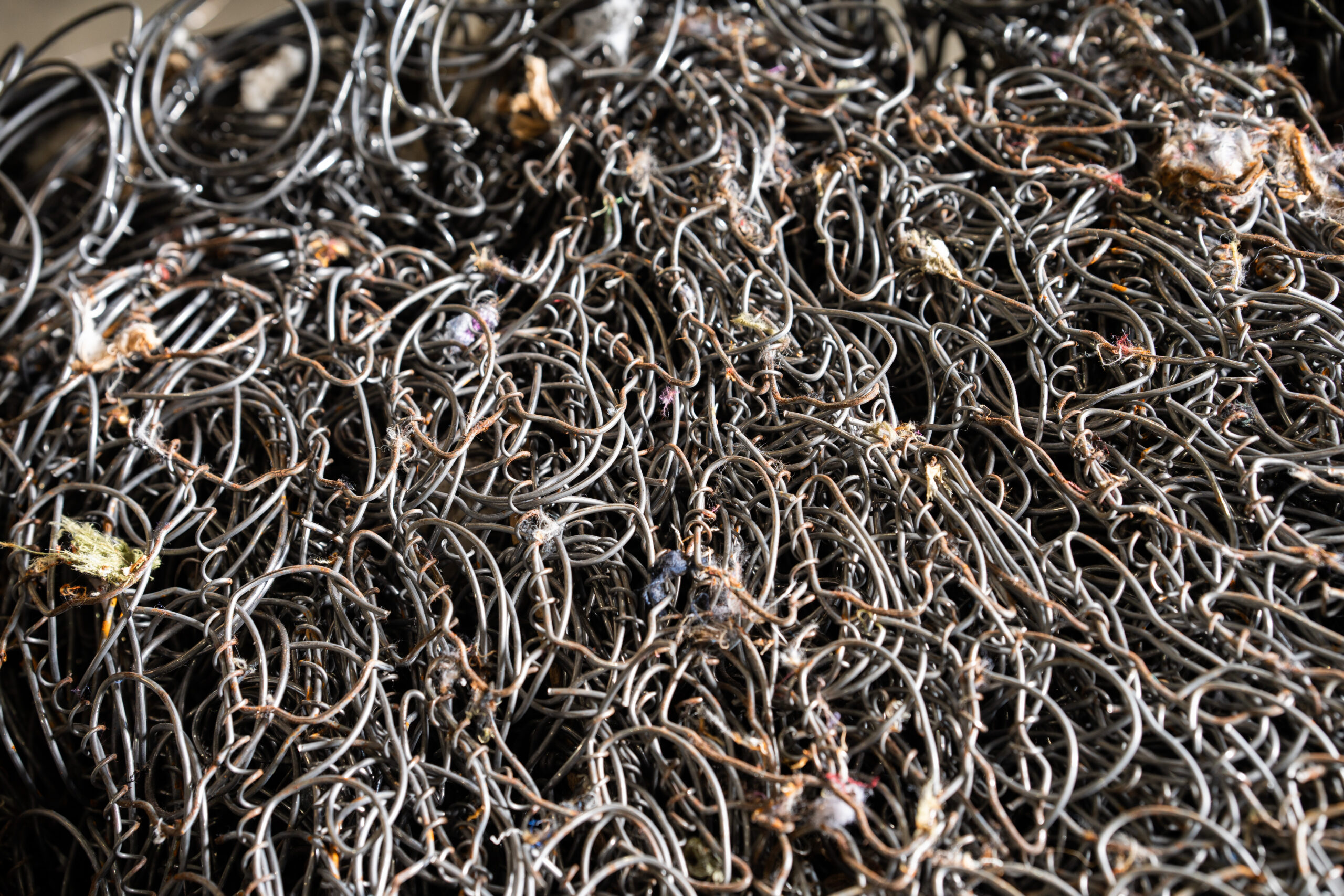
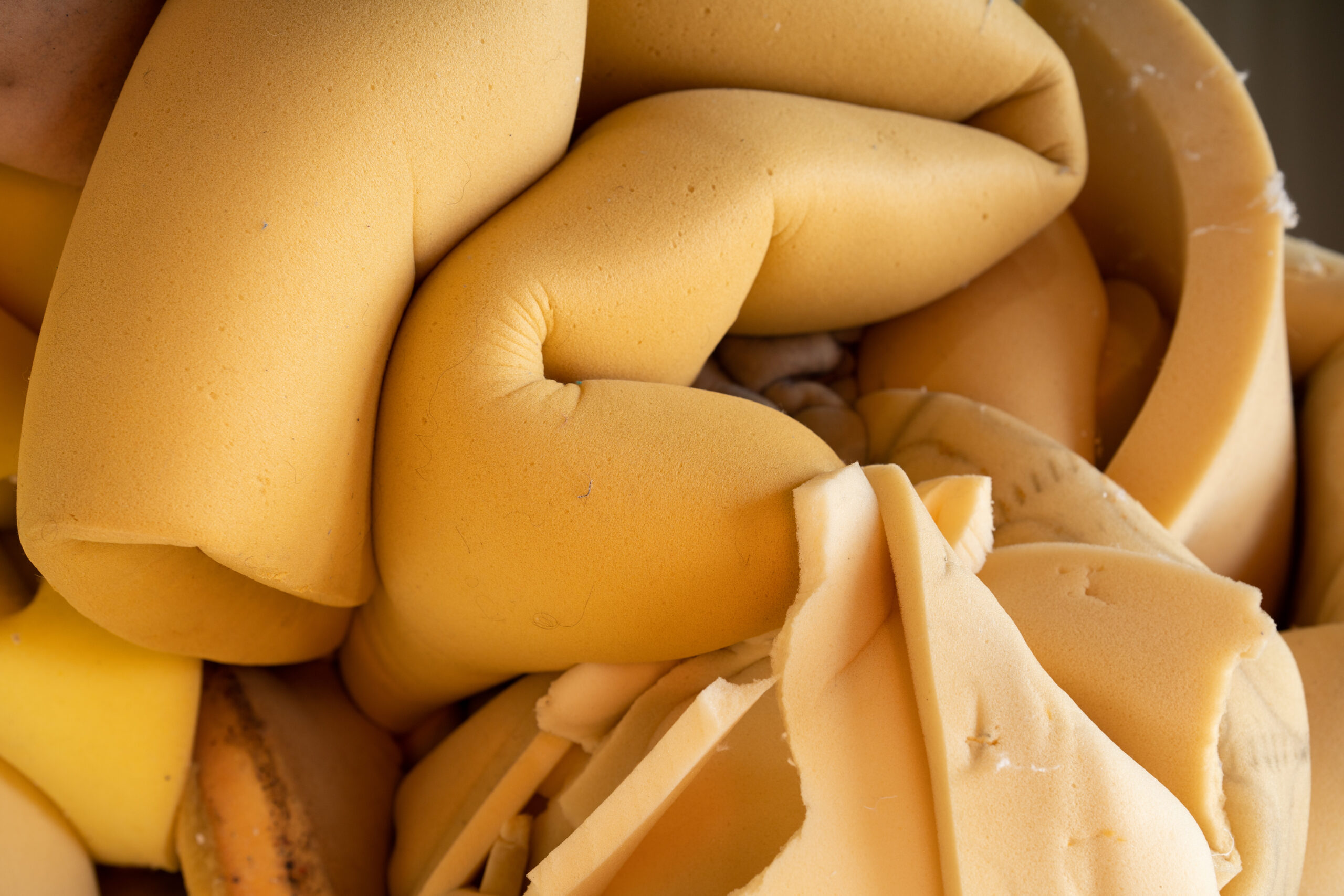
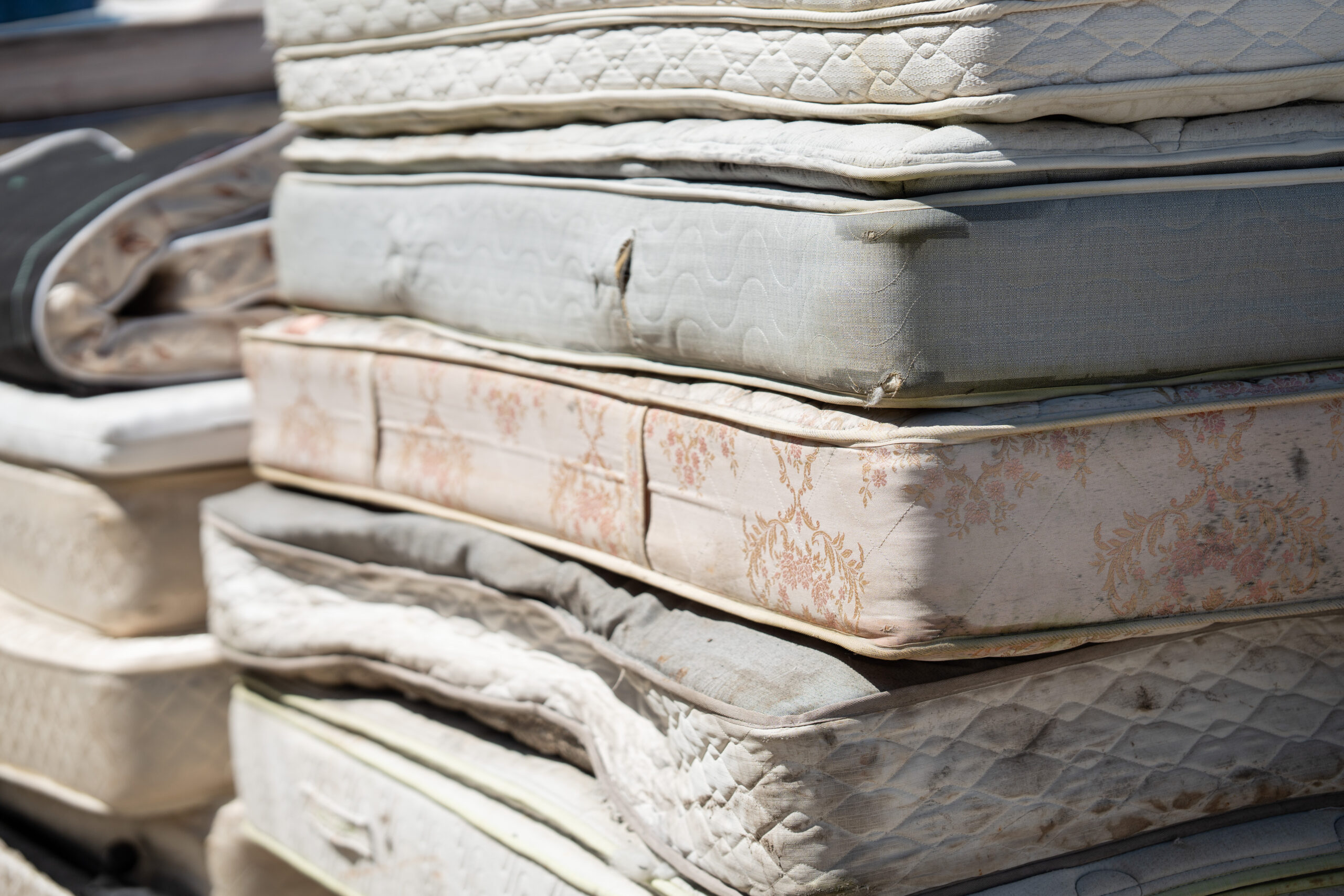
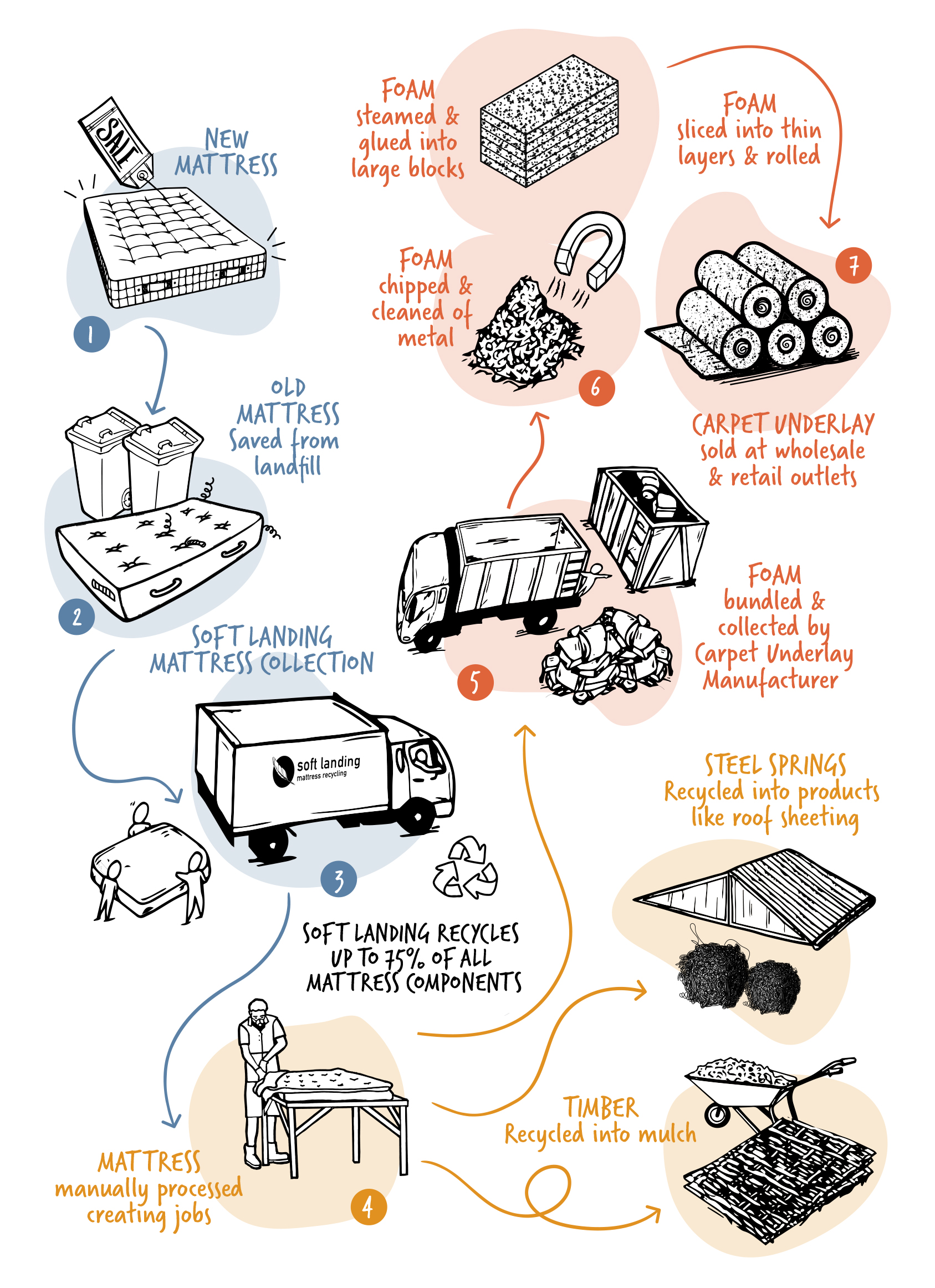
What Happens to a Mattress When It’s Recycled? The Journey of Mattress Foam
What Happens to a Mattress When It’s Recycled? The Journey of Mattress Foam
Why Recycle Your Mattress?
Top benefits of mattress recycling:
Reduce Environmental Impact: 1.8 million mattresses are disposed of each year in Australia and around 740,000 end up in landfill. Here, they can take up to 120 years to decompose, taking up enormous amounts of limited space and contributing to environmental pollution. Recycling prevents these bulky items from going to landfill.
Conserve Resources: By recycling your mattress, you’re saving valuable materials like foam, steel and timber from landfill and keeping them in circulation – reducing the need for new resources and saving energy.
Create a Positive Social Impact: Recycling your mattress with Soft Landing not only benefits the environment but also creates jobs for individuals facing barriers to employment, helping us build stronger, more inclusive communities.
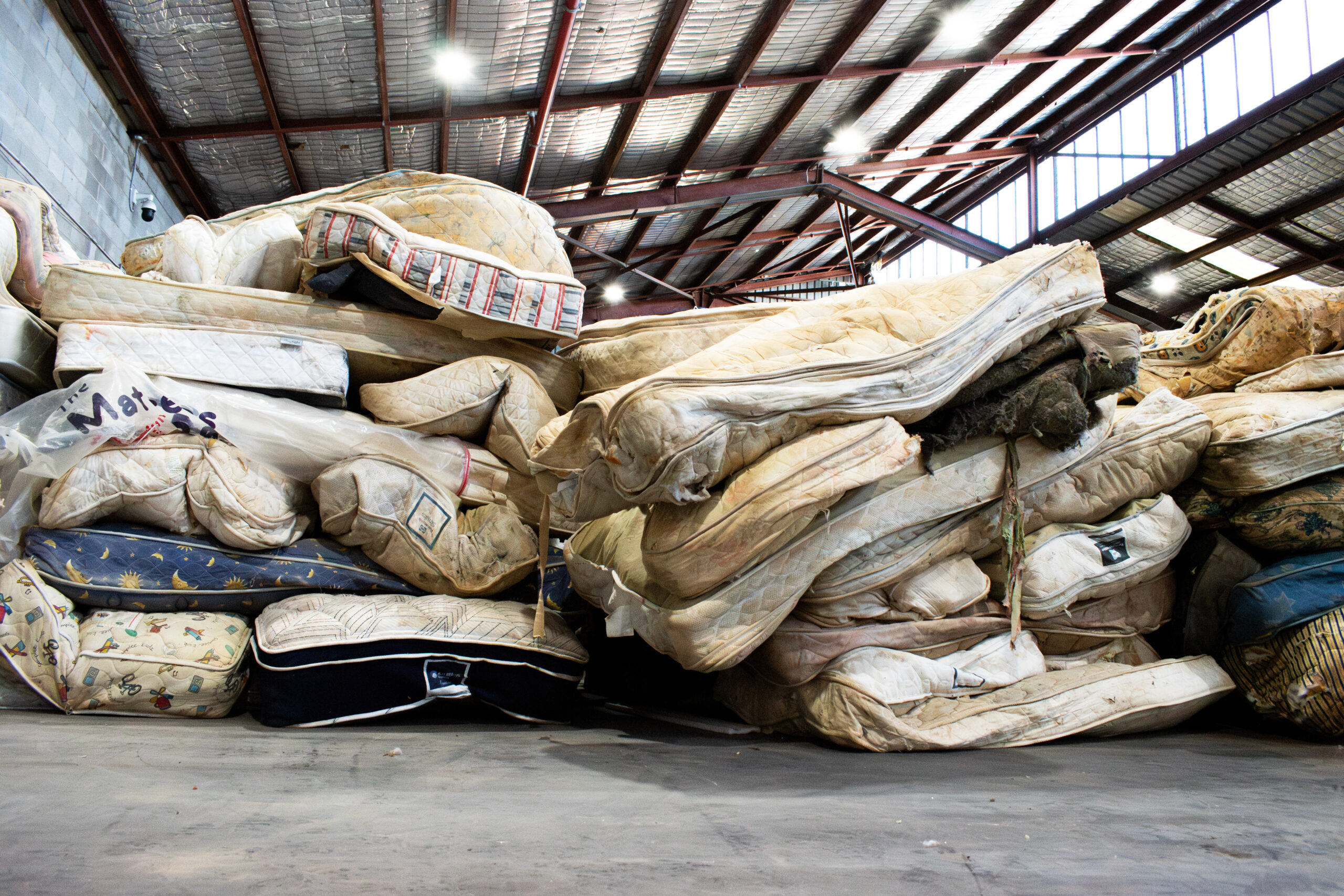
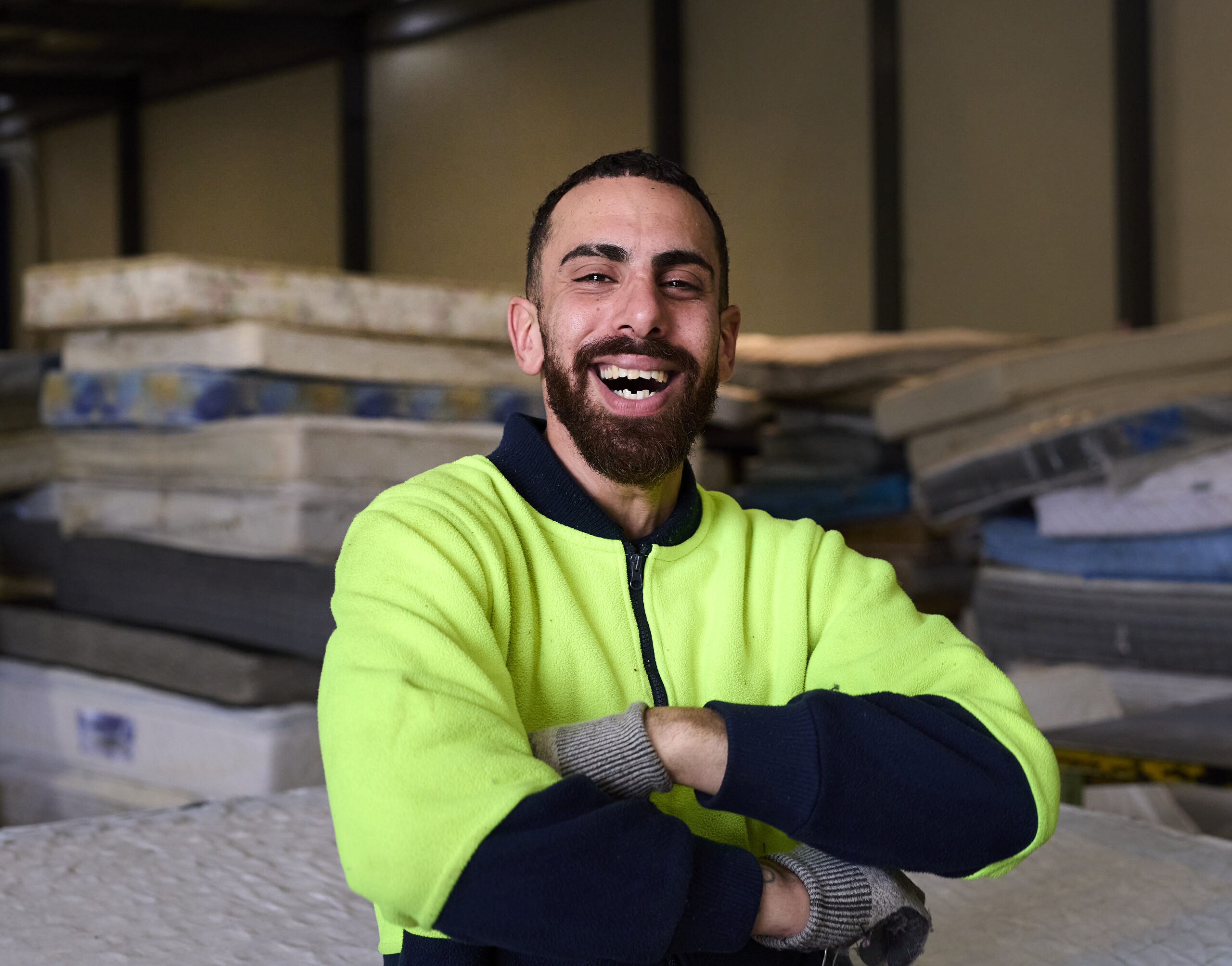
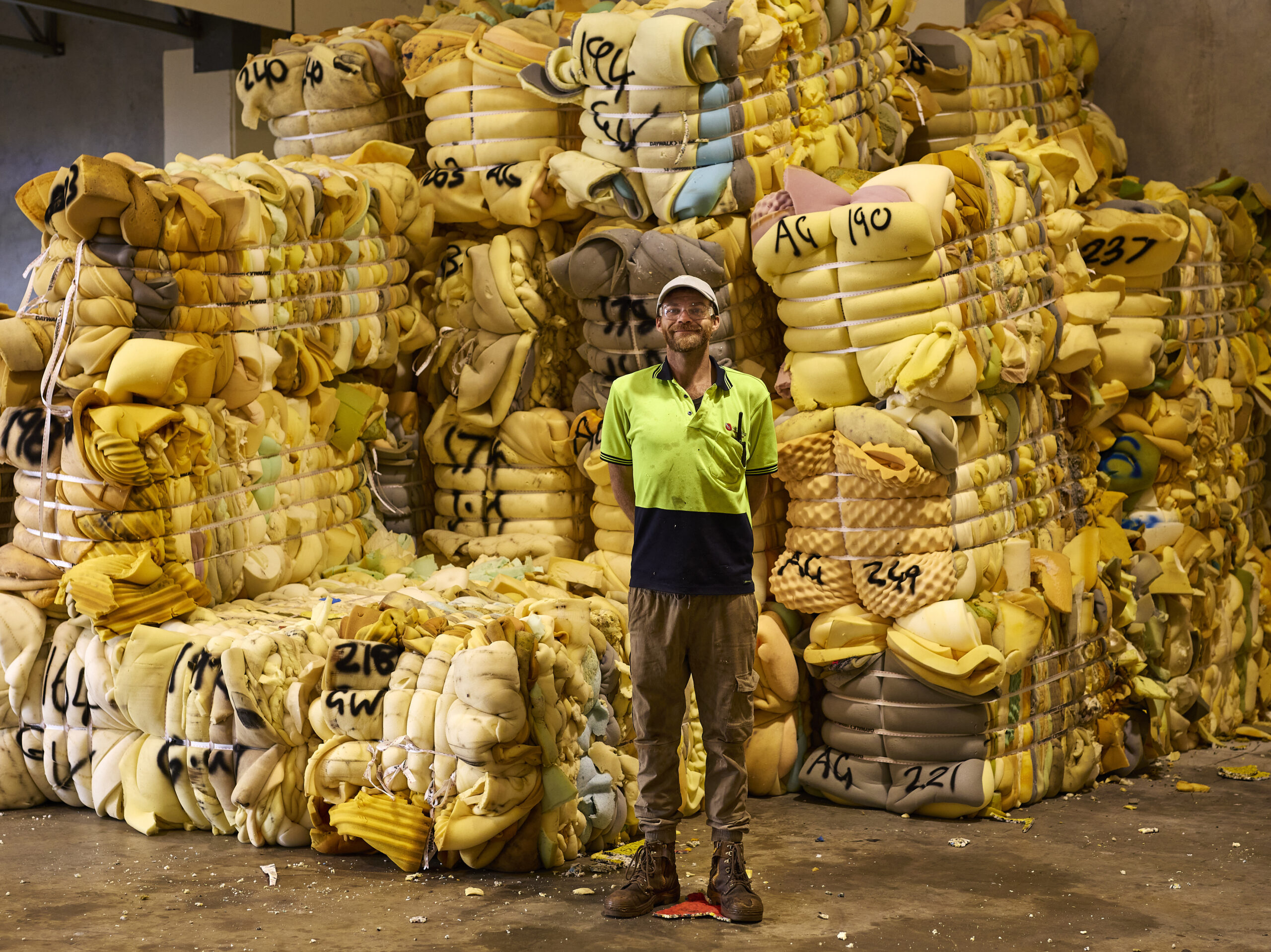
Common Questions about Mattress Recycling
Common Questions about Mattress Recycling
Help Us Keep Mattresses Out of Landfill
Choosing Soft Landing to recycle your mattress means supporting a certified not-for-profit social enterprise and registered charity that prioritises resource recovery, creates local jobs, and makes mattress recycling simple and accessible for all Australians.
Book a Collection
Make a positive impact by booking a mattress collection with Soft Landing. Our service makes it easy to dispose of your mattress responsibly, knowing that it will be deconstructed and recycled with care by real, passionate people.
Partner with us
Are you a progressive council, mattress retailer, or other organisation interested in meeting Australia’s demand for responsible mattress recycling services? Get in touch with us today to find out how we can partner to recycle mattresses.


